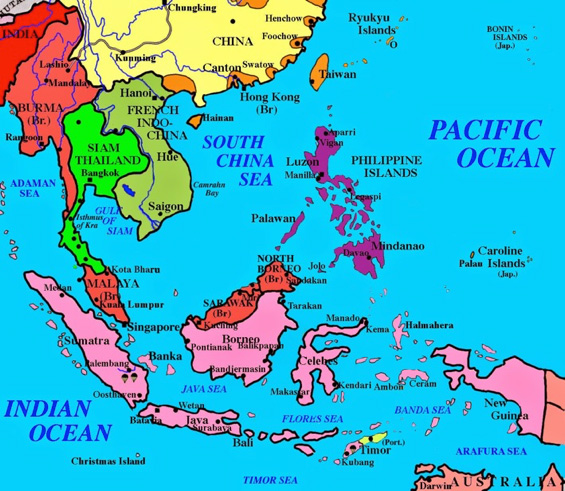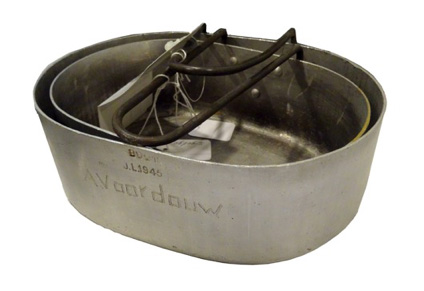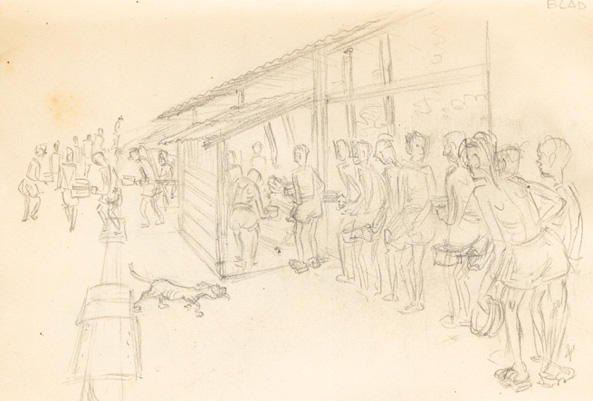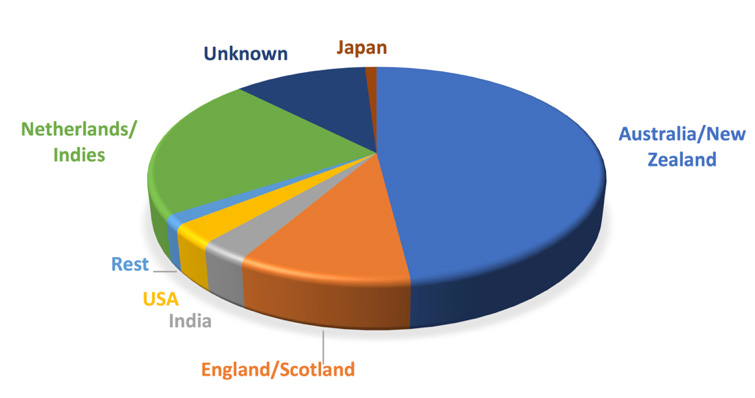Henk Brouwer’s history
Henk Brouwer (1903-1970) spent most of his life in the Dutch East-Indies, where he worked as an art teacher. In 1941 he joined the army and was stationed in Fort Menari, near Soerabaja. After the Japanese invasion he was transferred to a series of POW camps: Jaarmarktterrein, Lyceum/HBS, again to Jaarmarktterrein (all in Soerabaja), 10th Bat (Batavia) and Changi (Singapore). After the war he lived successively in Holland, Australia and South Africa.
His artwork
In Fort Menari Henk Brouwer started sketching and painting daily life in the camp. This had a soothing effect on hisw mental state and helped him to cope with the uncertain conditions. But he also felt the need to record everything that happened for posterity. During the war he made dozens, maybe hundreds of drawings, most of them aquarelles. Unfortunately many of these drawings were lost, but two sketch-books were saved. Apart from these drawings Brouwer portrayed between 300 and 350 fellow-soldiers in the camps.

One of the drawings in Brouwer’s sketchbooks.
The manuscript
Shortly after the war Brouwer recorded his war time experiences in a manuscript of more than 160 pages. This manuscript recently emerged in an old suitcase in the attic of one of his sons, who lives in South Africa. The manuscript contains an extensive description of the harsh life in the pow camps. But it also gives a vivid impression of the way Brouwer’s two passions – art and music – helped him to survive the war. In Changi he made his own pigments from the natural materials he found in and around the camp.

Fragment of Brouwer’s 160 pages autobiografy.
The portraits
In 1942 Henk Brouwer started drawing portraits of his fellow-inmates. For every portrait he asked a few dollars, which bought him some food and new drawing materials. Apparently his portraits were much appreciated, since he received dozens of orders, mainly from officers. The quality of his work earned him the nickname of ‘Rembrandt’.
Even a Japanese camp commander once forced him to paint his portrait. After the war the people portrayed took their portraits home, so Brouwer’s work got scattered around the world.

War
From 1941 – 1945 the global conflict of WWII was fought out in South-East Asia most severely. In this region the U.S.A. and Australia got involved in the war from the moment the Japanese army occupied the English and Dutch colonies. Tens of thousands of Allied soldiers were imprisoned in POW camps. Tens of thousands of civilians were locked up in separate internment camps.

Map of South East Asia just before WWII
POW camps
Life in the POW camps cannot be compared to that in the civilian internment camps. In many POW camps the strict hierarchy of the army was maintained and thus the army units stayed together as much as possible. There was hardly any contact between units of different nationalities. The camps even developed an internal economy: the prisoners received a small payment, that enabled them to buy some food that was smuggled into the camp.

Food bowls of Anton Voordouw (collection Bronbeek Museum). Voordouw was among the prisoners portrayed by Henk Brouwer.
Changi
Brouwer spent most of his time as a prisoner-of-war in the Changi camp in Singapore. Changi was a transition camp, from where the prisoners were put to work at the notorious Birma Siam Railway or in labour camps in Japan. Confined to the camp hospital for several months Brouwer escaped this brutal fate. His first two years in Changi were relatively peaceful. From May 1944 on life in Changi got worse and the lack of food became disastrous. See also: Wikipedia Changi

One of Brouwer’s sketches of Changi Jail: queuing for food distribution.
International conflict
To what extent the conflict in Asia was an international one, is clearly shown by the different nationalities of the soldiers Brouwer portrayed in Changi. Among the 200 names Brouwer accurately recorded are many soldiers from Australia, the British Empire and The Netherlands, but some others hailde from India, Canada, New-Zealand, Belgium and even Japan.

Graphic of the nationality of 200 prisoners-of-war that were portrayed by Henk Brouwer.
Labour camps
During WWII the Changi transition camp housed more than 50.000 prisoners of war. The number of prisoners who died here is estimated at 850, but many more prisoners died in the labour camps. Above all the work at the Birma-Siam Railway or ‘Death Railway’ was infernal. It is assumed that at least 200.000 Asian civilians lost their lives in the labour camps as well as more than 60.000 allied prisoners of war, mostly from Australia, the British Empire and the Netherlands. 25 % of them died of exhaustion, starvation, diseases and/or violence. See also Wikipedia Burma Railway

